
New Hampshire
New Hampshire: Who Pays? 7th Edition
January 9, 2024 • By ITEP Staff
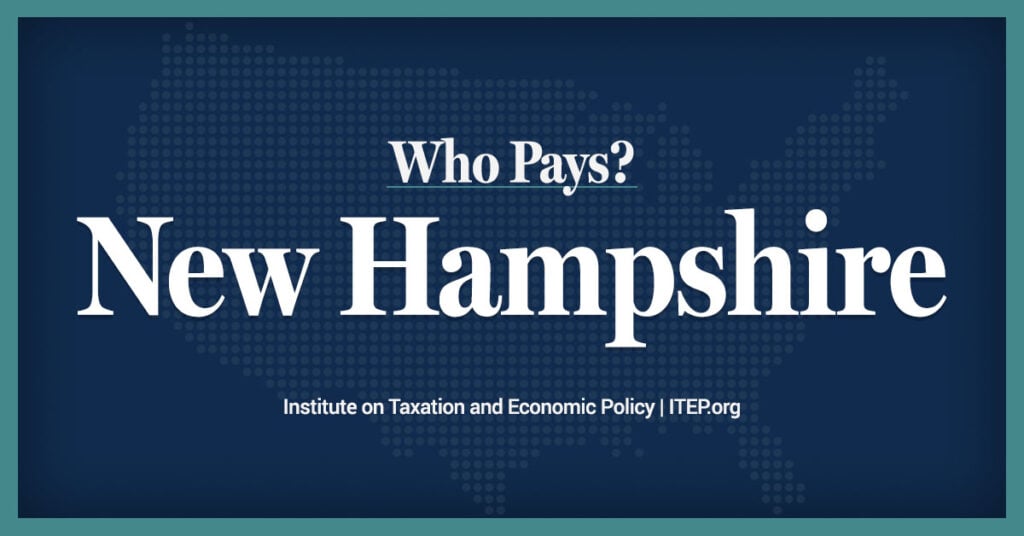
New Hampshire Download PDF All figures and charts show 2024 tax law in New Hampshire, presented at 2023 income levels. Senior taxpayers are excluded for reasons detailed in the methodology. Our analysis includes nearly all (99.9 percent) state and local tax revenue collected in New Hampshire. These figures depict New Hampshire’s Interest and Dividend’s Tax […]
New Hampshire Fiscal Policy Institute: Households with High Incomes Disproportionately Benefit from Interest and Dividends Tax Repeal
March 30, 2023
New analyses of the elimination of New Hampshire’s Interest and Dividends Tax show that the reduction in tax revenue disproportionately benefits individuals and households with high incomes while significantly reducing revenues available for public services. Read more.
New Hampshire Fiscal Policy Institute: Expansions of the Earned Income Tax Credit and Child Tax Credit in New Hampshire
March 23, 2022
Prior to the temporary expansions, nearly one in five likely eligible Granite Staters did not claim the EITC, and approximately 7,745 children were estimated to be eligible for the CTC while the credit was not claimed on their household’s tax return. The potential under enrollment in key assistance programs, along with underutilization of the EITC […]
New Hampshire Fiscal Policy Institute: Elimination of the Interest and Dividends Tax Would Disproportionately Benefit High-Income Individuals
May 21, 2021
A new analysis of the proposed elimination of New Hampshire’s Interest and Dividends Tax shows nearly nine out of every ten dollars of the tax reduction would flow to the top 20 percent of income earners in New Hampshire, and almost half of the benefits would flow to the top one percent of income earners. […]
New Hampshire Fiscal Policy Institute: Report Shows Higher Effective Tax Rates for Residents with Low Incomes
October 18, 2018
Most New Hampshire residents with lower incomes pay a higher percentage of the money they earn in state and local taxes than residents with higher incomes do. In a new report released yesterday, the Institute on Taxation and Economic Policy conducted evaluations of state and local government tax systems in each of the 50 states and modeled their impacts on non-elderly residents. The report concludes that 45 states have tax systems that ask a greater percentage of the incomes of those with low earnings than those with the highest incomes.
New Hampshire: Who Pays? 6th Edition
October 17, 2018 • By ITEP Staff
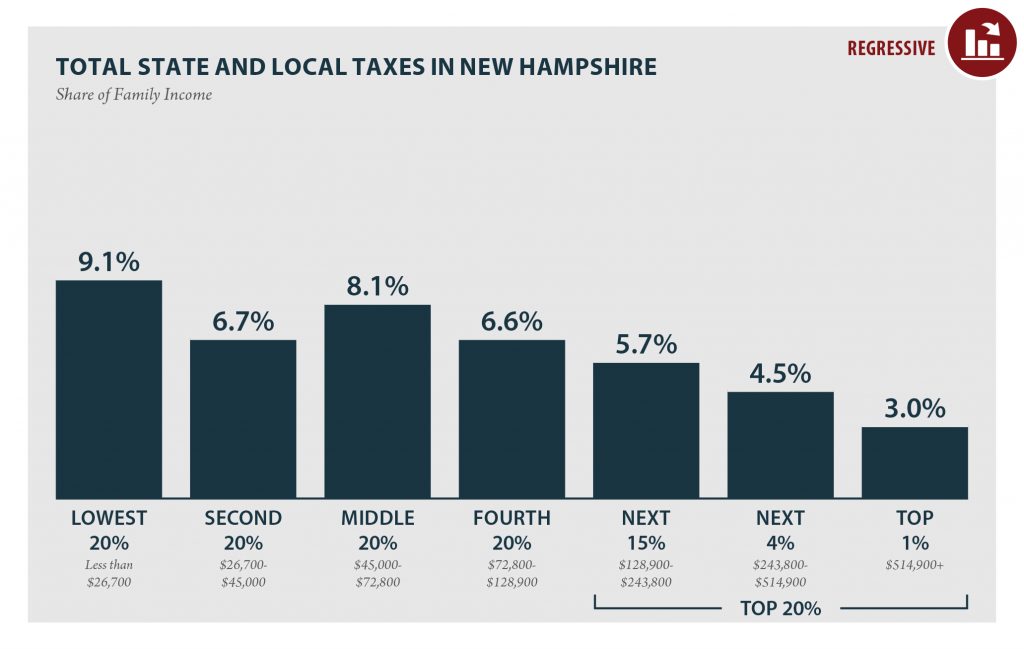
According to ITEP’s Tax Inequality Index, New Hampshire has the 16th most unfair state and local tax system in the country. Incomes are more unequal in New Hampshire after state and local taxes are collected than before.
Twelve States Offer Profitable Tax Shelter to Private School Voucher Donors; IRS Proposal Could Fix This
October 2, 2018 • By Carl Davis

A proposed IRS regulation would eliminate a tax shelter for private school donors in twelve states by making a commonsense improvement to the federal tax deduction for charitable gifts. For years, some affluent taxpayers who donate to private K-12 school voucher programs have managed to turn a profit by claiming state tax credits and federal tax deductions that, taken together, are worth more than the amount donated. This practice could soon come to an end under the IRS’s broader goal of ending misuse of the charitable deduction by people seeking to dodge the federal SALT deduction cap.
Tax Cuts 2.0 – New Hampshire
September 26, 2018 • By ITEP Staff
The $2 trillion 2017 Tax Cuts and Jobs Act (TCJA) includes several provisions set to expire at the end of 2025. Now, GOP leaders have introduced a bill informally called “Tax Cuts 2.0” or “Tax Reform 2.0,” which would make the temporary provisions permanent. And they falsely claim that making these provisions permanent will benefit […]
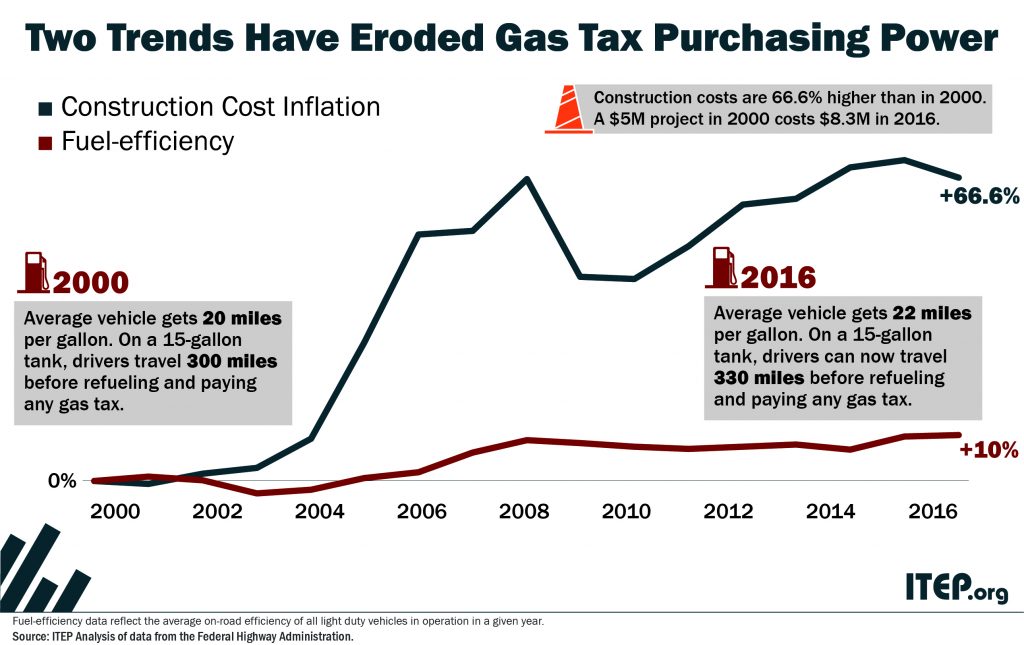
An updated version of this blog was published in April 2019. State tax policy can be a contentious topic, but in recent years there has been a remarkable level of agreement on one tax in particular: the gasoline tax. Increasingly, state lawmakers are deciding that outdated gas taxes need to be raised and reformed to fund infrastructure projects that are vital to their economies.
How the Final GOP-Trump Tax Bill Would Affect New Hampshire Residents’ Federal Taxes
December 16, 2017 • By ITEP Staff
The final tax bill that Republicans in Congress are poised to approve would provide most of its benefits to high-income households and foreign investors while raising taxes on many low- and middle-income Americans. The bill would go into effect in 2018 but the provisions directly affecting families and individuals would all expire after 2025, with […]
How the House and Senate Tax Bills Would Affect New Hampshire Residents’ Federal Taxes
December 6, 2017 • By ITEP Staff
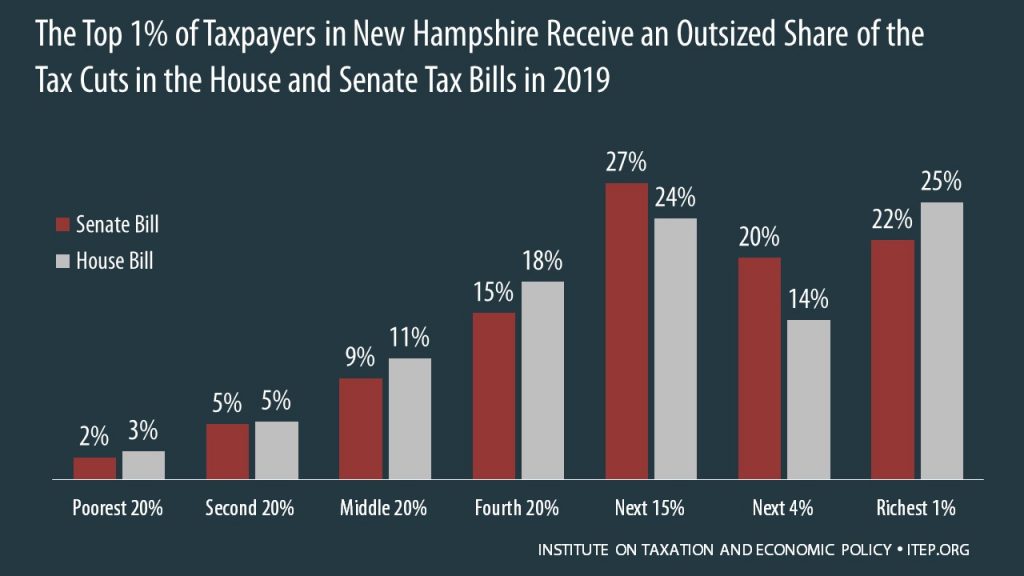
The House passed its “Tax Cuts and Jobs Act” November 16th and the Senate passed its version December 2nd. Both bills would raise taxes on many low- and middle-income families in every state and provide the wealthiest Americans and foreign investors substantial tax cuts, while adding more than $1.4 trillion to the deficit over ten years. The graph below shows that both bills are skewed to the richest 1 percent of New Hampshire residents.
How the Revised Senate Tax Bill Would Affect New Hampshire Residents’ Federal Taxes
November 14, 2017 • By ITEP Staff

The Senate tax bill released last week would raise taxes on some families while bestowing immense benefits on wealthy Americans and foreign investors. In New Hampshire, 44 percent of the federal tax cuts would go to the richest 5 percent of residents, and 14 percent of households would face a tax increase, once the bill is fully implemented.
How the House Tax Proposal Would Affect New Hampshire Residents’ Federal Taxes
November 6, 2017 • By ITEP Staff
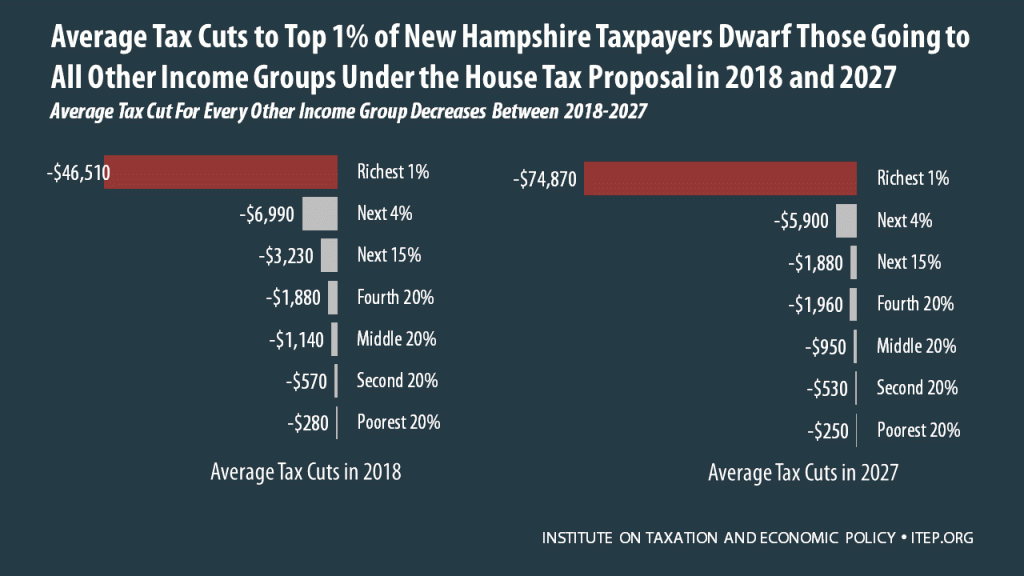
The Tax Cuts and Jobs Act, which was introduced on November 2 in the House of Representatives, includes some provisions that raise taxes and some that cut taxes, so the net effect for any particular family’s federal tax bill depends on their situation. Some of the provisions that benefit the middle class — like lower tax rates, an increased standard deduction, and a $300 tax credit for each adult in a household — are designed to expire or become less generous over time. Some of the provisions that benefit the wealthy, such as the reduction and eventual repeal of the estate…
GOP-Trump Tax Framework Would Provide Richest One Percent in New Hampshire with 53.3 Percent of the State’s Tax Cuts
October 4, 2017 • By ITEP Staff

The “tax reform framework” released by the Trump administration and congressional Republican leaders on September 27 would not benefit everyone in New Hampshire equally. The richest one percent of New Hampshire residents would receive 53.3 percent of the tax cuts within the state under the framework in 2018. These households are projected to have an income of at least $545,600 next year. The framework would provide them an average tax cut of $69,390 in 2018, which would increase their income by an average of 4.2 percent.
In New Hampshire 33.5 Percent of Trump’s Proposed Tax Cuts Go to People Making More than $1 Million
August 17, 2017 • By ITEP Staff
A tiny fraction of the New Hampshire population (0.3 percent) earns more than $1 million annually. But this elite group would receive 33.5 percent of the tax cuts that go to New Hampshire residents under the tax proposals from the Trump administration. A much larger group, 35.1 percent of the state, earns less than $45,000, but would receive just 5.1 percent of the tax cuts.
Trump Tax Proposals Would Provide Richest One Percent in New Hampshire with 41.3 Percent of the State’s Tax Cuts
July 20, 2017 • By ITEP Staff
Earlier this year, the Trump administration released some broadly outlined proposals to overhaul the federal tax code. Households in New Hampshire would not benefit equally from these proposals. The richest one percent of the state’s taxpayers are projected to make an average income of $1,668,100 in 2018. They would receive 41.3 percent of the tax cuts that go to New Hampshire’s residents and would enjoy an average cut of $98,940 in 2018 alone.
State Rundown 6/28: States Scramble to Finish Budgets Before July Deadlines
June 28, 2017 • By ITEP Staff
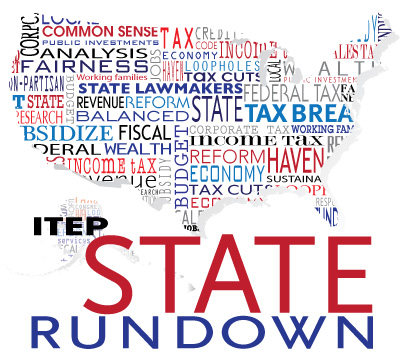
This week, several states attempt to wrap up their budget debates before new fiscal years (and holiday vacations) begin in July. Lawmakers reached at least short-term agreement on budgets in Alaska, New Hampshire, Rhode Island, and Vermont, but such resolution remains elusive in Connecticut, Delaware, Illinois, Maine, Pennsylvania, Washington, and Wisconsin.
New Hampshire Fiscal Policy Institute: Revenue in Review: An Overview of New Hampshire’s Tax System and Major Revenue Sources
May 24, 2017
New Hampshire’s revenue system is relatively unique in the United States, as it lacks broad-based income and sales taxes and instead relies on a diversity of more narrowly-based taxes, fees, and other revenue sources to fund public services. This system presents both advantages and disadvantages to stable, adequate, and sustainable revenue generation.
Huffington Post: How Some States Are Trying To Fix Their Crumbling Infrastructure
July 6, 2015
Carl Davis, research director at the Institute on Taxation and Economic Policy, said efforts to raise state taxes to pay for roads and bridges exploded this year. In 2013 and 2014, four states (Massachusetts, New Hampshire, Vermont and Wyoming) increased their gas taxes, while Maryland, Pennsylvania and Rhode Island indexed the gas tax to either […]
New Hampshire Fiscal Policy Institute: Low-Income Taxpayers in New Hampshire Pay Three Times the Tax Rate Paid by the Wealthiest Granite Staters
January 21, 2015
A new study released today by the Institute on Taxation and Economic Policy (ITEP) finds that the lowest income Granite Staters pay an effective tax rate that is three times that paid by the state’s wealthiest residents. Read the full report
New Hampshire Fiscal Policy Institute: New Hampshire’s Tax System Asks Far Less of the Wealthy than of the Poor
January 21, 2015
More than five years after the end of the Great Recession, many Granite Staters are still struggling. The typical household’s income has yet to recover the ground it lost during the economic downturn, while wages for individuals and families at the bottom of the income distribution are still where they were two decades ago. A […]
New Hampshire Voice: Poor families pay bigger share of their income in taxes than wealthy families
January 16, 2015
“The analysis by the Institute on Taxation and Economic Policy that evaluates the local tax burden in every state concluded that when it comes to paying taxes, the people who earn less pay more. In simple terms the low-and middle-income families’ in each state spend more money on state and local taxes than wealthy people. […]
Concord Monitor: Common-sense reforms can address inequality, budget shortfalls
January 15, 2015
“A comprehensive national report issued this week demonstrates that New Hampshire’s state and local tax system asks far more of low- and moderate-income taxpayers than wealthy ones. The report, released by the Institute on Taxation and Economic Policy, finds that, on average, non-elderly individuals and families in the bottom fifth of the income distribution in […]
Bloomberg BNA: Extras on Excise, Running out of Gas
May 30, 2014
By Rebecca Helmes, May 28, 2014 New Hampshire drivers will soon pay more per gallon in gas tax, and in return their Interstate 93 widening project will be funded, along with other highway projects. On the heels of several states’ gas tax increases in 2013, the Granite State is the first this year to enact […]
Bloomberg: How Gasoline-Use Drop May Raise Taxes in Deleware
May 27, 2014
Fuel-efficiency gains, inflation and higher construction costs have eroded the ability of state gasoline taxes to keep pace with needs, said Carl Davis, an analyst at the Institute on Taxation and Economic Policy, a Washington-based research group.
